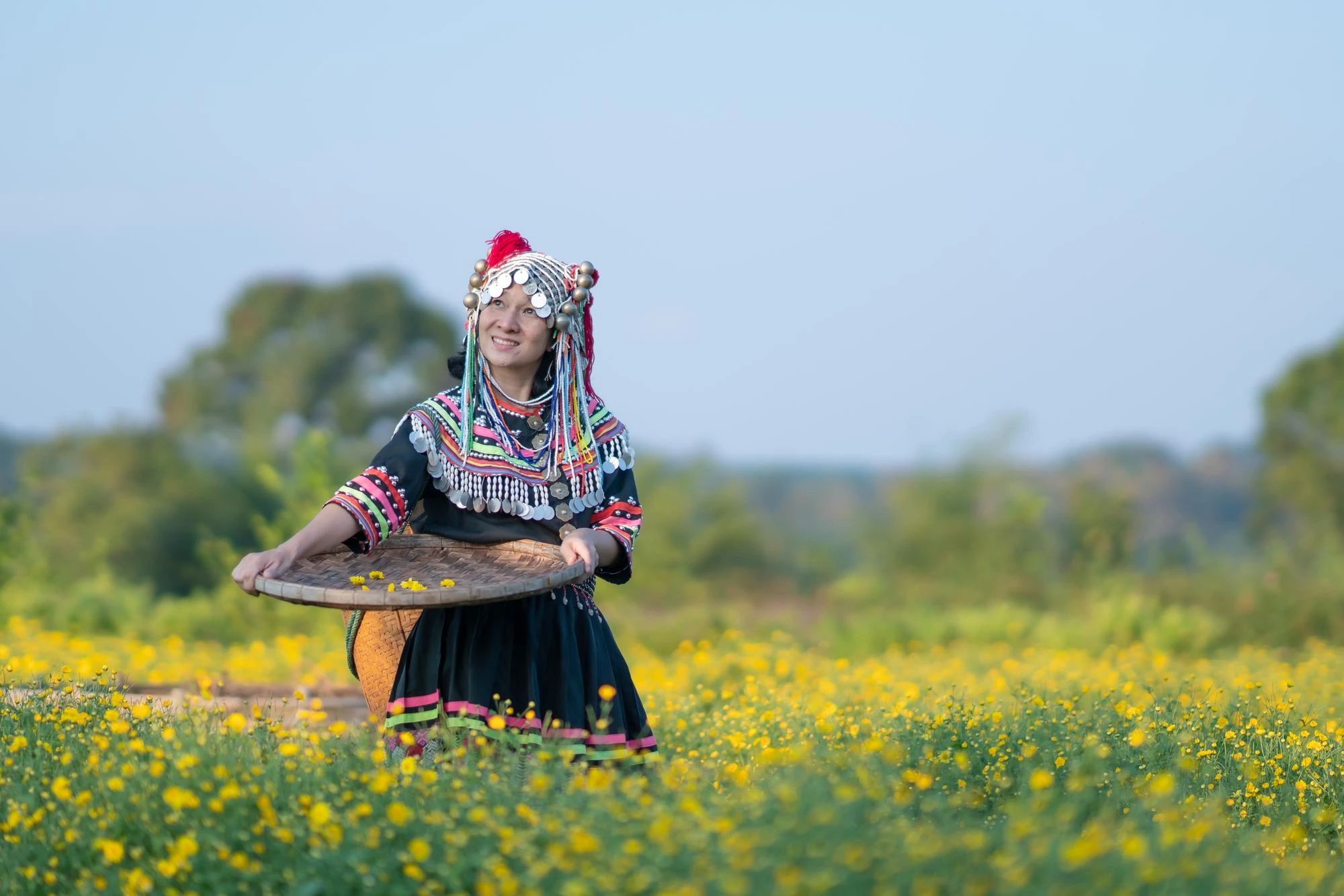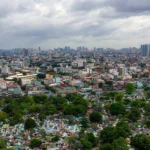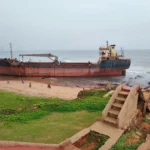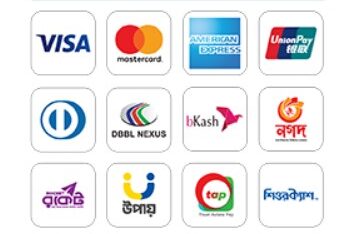If you’ve ever asked “what is Bangladesh culture?” you’re really asking about a living mosaic: a river-fed land where poetry is political, family is a daily rhythm, and festivals stitch seasons together. Bangladesh is compact on the map, yet its culture stretches across centuries—rooted in Bangla (Bengali) language, shaped by Islam alongside Hindu, Buddhist, and Christian traditions, and flavored—literally—by rice, fish, tea, and sweets. This guide takes you far beyond clichés, giving you the human, on-the-ground feel for how people live, speak, worship, celebrate, and work in the city of Dhaka, Bangladesh and across the countryside.
We’ll cover the main language of Bangladesh, the religion of Bangladesh, social etiquette, arts, food, and festivals—with practical context for travelers, students, and professionals in the U.S. who want to understand, collaborate, and connect.
Quick Facts (At a Glance)
- Official Language: Bangla (Bengali). English widely used in business, universities, tech, and the courts.
- Other Languages: Dozens of Indigenous/tribal languages (e.g., Chakma, Marma, Garo, Khasia, Santali), plus regional varieties like Chittagonian and Sylheti.
- Main Religion of Bangladesh: Islam (majority), with Hinduism, Buddhism, and Christianity also practiced.
- Cultural Identity: Family-first, community-minded, hospitable, respectful to elders, proud of heritage, expressive through music, film, literature, and craft.
- Climate & Geography: Tropical monsoon; delta of the Ganges–Brahmaputra–Meghna rivers. Rivers and seasons deeply shape agriculture, cuisine, and festivals.
- Capital & Cultural Hub: Dhaka—fast, loud, creative, entrepreneurial, and absolutely alive.
The Heartbeat of Identity: Language in Bangladesh
What do they speak in Bangladesh? The short answer is Bangla—a language with its own script, a lyrical cadence, and an outsized role in national identity. The longer answer reveals why language is inseparable from culture here.
Bangla (Bengali): More Than Words
- Bangla is the official language of Bangladesh and the first language for the vast majority of the population.
- It has two broad registers: shadhu bhasha (literary/formal) and cholito bhasha (colloquial/modern standard). The latter dominates everyday speech and media.
- Poetry, songs, and slogans in Bangla are not just art—they’re instruments of unity, used in social movements, from the Language Movement of 1952 to modern-day civic life.
Regional and Indigenous Languages
To ask “how many languages in Bangladesh?” is to open a vibrant catalog:
- Regional varieties: Sylheti and Chittagonian are famous for distinctive accents, vocabulary, and rhythm.
- Indigenous/tribal languages: Chakma, Marma, Garo, Khasia, Tripura, Santali and others remain vital to cultural identity in the Chittagong Hill Tracts and northern districts.
- English is the key second language—used in higher education, IT, research, law, and international business. If you’re traveling or working in urban centers like Dhaka, you’ll find plenty of English signage and speakers in hotels, universities, coworking hubs, and embassies.
Faith in Daily Life: Religion in Bangladesh
What is Bangladesh’s religion? The main religion in Bangladesh is Islam, practiced by the majority, but the cultural fabric is more varied than a single thread.
The Religious Landscape
- Islam (Sunni; inclusive, culturally grounded, infused with Sufi influences in many communities).
- Hinduism (ritual, festival, and temple life—especially around Durga Puja—are deeply rooted).
- Buddhism (visible in archaeological sites like Paharpur and in living traditions, especially among communities in the southeast).
- Christianity (historic churches in Dhaka and Chattogram; educational and health institutions with Christian roots are well-respected).
Coexistence and Community
In cities and villages alike, it’s common for neighbors of different faiths to exchange sweets on holidays and attend each other’s celebrations. While the main religion of Bangladesh is Islam, the religion in Bangladesh is best understood as a coexistence that plays out in shared festivals, food, and friendships.
Traveler tip: Dress modestly for mosques and temples, remove shoes when required, and ask before photographing rituals. Respect is universal—so a smile and a “Assalamu Alaikum” (peace be upon you) go a long way.
Family, Etiquette & Everyday Culture of Bangladesh
Bangladeshi culture is anchored in family and community, shaped by respect for elders and kindness to guests. If you’re visiting from the U.S., a few norms stand out:
Hierarchy and Respect
- Elders first: They are greeted first, served first, and often make or guide decisions.
- Titles matter: In formal settings, use Sir/Madam (or “Bhai” for older brother, “Apu/Apa” for older sister). In business, sharing degrees on cards is common and respected.
Hospitality Is a Verb
- Expect tea (cha) within minutes of arriving anywhere. Declining is okay, but a small sip is appreciated.
- Shoes off at the door is common in homes.
- “No” is often phrased gently: “We will try” can mean unlikely. Listen for subtext.
Greetings & Body Language
- Handshakes are standard among men; with women, follow their lead—if they offer a handshake, reciprocate; otherwise a hand-over-heart nod is polite.
- Right hand is used for eating, giving, and receiving (in line with Islamic etiquette).
Clothing & Style
- Women commonly wear saree or salwar kameez; men wear shirt and trousers or panjabi with pajama/lungi for casual or religious occasions.
- Dress codes are adaptable—Dhaka’s business districts are modern, while mosques and rural areas expect modesty.
Festivals: The Land of Celebrations
Bangladesh is often called the land of festivals—where the calendar itself feels like a cultural map.
Religious Festivals
- Eid-ul-Fitr: The biggest Muslim celebration, marking the end of Ramadan. New clothes, family meals, and generosity define the day.
- Eid-ul-Adha: Commemorates Abraham’s devotion; families share meat with relatives and those in need.
- Durga Puja: A major Hindu festival—bright pandals, drumbeats, and vibrant artistry.
- Buddha Purnima: Celebrated among Buddhist communities; temples glow with lanterns.
- Christmas (Boro Din): Churches in Dhaka, Barishal, and Chattogram hold festive services.
Cultural & National Days
- Pohela Boishakh (Bengali New Year, mid-April): Red-and-white outfits, parades, fairs, pitha (rice cakes), and community gatherings.
- International Mother Language Day (Feb 21): A uniquely Bangladeshi contribution to world culture—honoring those who defended Bangla in 1952.
- Victory Day (Dec 16) and Independence Day (Mar 26): Parades, concerts, flags, and remembrance.
Food: Rice, Rivers & Flavor (Plus Sweets!)
If you want a shortcut to Bangladesh culture, eat like a local. The cuisine reflects rivers, seasons, and social gatherings.
Staples
- Rice is the anchor of most meals.
- Fish (hilsa is the superstar), cooked in mustard, curry, or fried.
- Dal (lentils) balances the plate.
Street & Home Favorites
- Fuchka (crisp shells with tangy tamarind water and spiced fillings).
- Singara/Samosa (savory pastry, a tea-time hit).
- Chicken/Beef Chaap & Kebab (grilled, spiced, sometimes smoky).
- Biryani (fragrant rice with meat—Old Dhaka is famous for it).
- Bhuna Khichuri (comforting rice-lentil dish, often on rainy days).
Sweets & Tea
- Roshogolla, Chomchom, Sandesh, Mishti Doi (yogurt dessert), and Jilapi (syrup swirls).
- Tea (Cha) is everywhere—milky, sweet, and perfect with conversation. In Sreemangal, try the legendary layered tea.
Arts, Literature & Performance
The culture of Bangladesh is a three-part harmony of literature, music, and visual craft, with modern media surfacing new voices.
Literature
- Rabindranath Tagore (Nobel laureate) and Kazi Nazrul Islam (national poet) are the twin pillars.
- Modern Bangla literature spans novels, short stories, and powerful poetry—often confronting identity, migration, and justice.
Music & Dance
- Baul folk tradition (mystic minstrels), Bhatiali (river songs), and Nazrul Sangeet (rebel poet’s compositions).
- Classical and contemporary dance are alive in Dhaka’s theaters and cultural centers.
Crafts & Design
- Jamdani weaving (UNESCO heritage)—gossamer muslin artistry.
- Nakshi Kantha (embroidered quilts), terracotta, brass, and handloom textiles that tie style to story.
Geography, Climate & the Culture of Place
People often wonder how physical features of Bangladesh and climate shape daily life. The short answer: profoundly.
- Rivers: Bangladesh is a vast delta—rivers irrigate rice fields, ferry goods, inspire songs, and sometimes force reinvention after floods.
- Monsoon: Life follows the seasons—planting, harvesting, rains, and cool winter festivals.
- Coast & Forest: From the Sundarbans mangroves (home of the Royal Bengal Tiger) to the hills of Sylhet and the Chittagong Hill Tracts, local foods, crafts, and rituals reflect the land.
Dhaka: A Cultural City in Overdrive
The city of Dhaka, Bangladesh is the country’s cultural megaphone—intense, creative, resilient.
- Old Dhaka: Historic mosques (Star Mosque), palaces (Ahsan Manzil), colonial lanes, and legendary eateries.
- University & Arts Districts: Shahbagh, Nilkhet, TSC—book stalls, galleries, theaters.
- Gulshan/Banani: Business towers, embassies, cafes, and startups.
- Festivals in the Streets: Book fairs, art festivals, language day marches—Dhaka makes culture visible.
Facts about Dhaka, Bangladesh: It’s one of the world’s densest megacities, yet parks like Ramna, institutions like the National Museum, and the iconic Parliament Building (by Louis Kahn) anchor an evolving urban identity.
Doing Business or Studying in Bangladesh: Culture Tips
If you’re coming from the U.S., these essentials help:
- Be early, expect delays: Traffic is legendary; always plan buffer time.
- Build relationships first: Trust comes before transactions; tea and small talk matter.
- Communicate clearly, kindly: Directness is okay, but add context and courtesy; look for cues beyond words.
- Follow the room: Senior leaders speak first; deference is a sign of respect, not passivity.
- Gifts: Small, thoughtful items from your home city/state are appreciated; present with the right hand.
Beyond Stereotypes: Modern Bangladesh
Culture in Bangladesh evolves quickly. The country is young, online, and entrepreneurial:
- Startup energy in fintech, logistics, and ed-tech.
- Women-led leadership across NGOs, garment design, media, and STEM.
- Diaspora links spanning New York, London, Toronto, and the Gulf—fueling remittances, ideas, and cross-cultural fluency.
- Cinema, YouTube, and OTT platforms are minting new stars and storytelling styles.
All of this coexists with village rhythms, prayer calls, and paddy fields. That mix—that tension—is the current of contemporary Bangladesh culture and traditions.
Practical Etiquette: Quick Dos & Don’ts
Do
- Dress modestly at religious sites.
- Learn a few Bangla words: Dhonnobad (thank you), Bhalo achi (I’m fine).
- Accept tea and snacks graciously.
- Ask before photographing people.
Don’t
- Use your left hand to pass food or gifts.
- Criticize religion or culture—curiosity beats judgment.
- Assume head-nodding “yes” means agreement; it can mean “I hear you.”
Why Understanding Culture Matters (Especially for Visitors From the USA)
- You’ll navigate Dhaka and regional hubs with confidence.
- Your meetings and friendships will flourish faster.
- You’ll taste the difference (literally)—from Old Dhaka biryani to Sreemangal tea.
- Most importantly, you’ll experience a culture that’s proud, warm, and deeply human.
Frequently Asked Questions (FAQ)
1) What is the main language of Bangladesh?
Bangla (Bengali). It’s the official language and the heart of national identity. English is widely used in universities and business. Many Indigenous languages are spoken regionally.
2) What is the main religion in Bangladesh?
Islam is the majority faith. Hinduism, Buddhism, and Christianity are also practiced, and communities often join each other’s celebrations.
3) What do Bangladeshis typically wear?
Women: saree or salwar kameez; men: shirt and trousers, panjabi, or lungi (informal). In corporate Dhaka, Western business attire is common.
4) What foods should I try first?
Start with hilsa fish, biryani, fuchka, bhuna khichuri, and mishti doi—with a cup of sweet cha (tea).
5) How should I greet people?
A polite “Assalamu Alaikum” works almost everywhere. Handshakes are common among men; with women, follow their lead or place your hand over your heart with a nod.
6) Is Bangladesh safe for travelers?
Use big-city common sense: arrange trusted drivers, be mindful at night, follow local advice, and respect social norms. Most visits are trouble-free and very welcoming.
7) What’s unique about Bangladesh culture?
A rare combination of linguistic pride, festival-rich calendar, family-centered life, and artistic expression—from Jamdani textiles to Baul music—set against the living drama of rivers and seasons.
Asking “what is the culture of Bangladesh?” is like asking what keeps a river flowing. The answer changes with the season, but the current—language, faith, family, food, and festivals—remains. Whether you’re planning research in Dhaka, sourcing textiles in Narayanganj, or visiting friends in Sylhet, understanding Bangladesh culture won’t just make your trip smoother—it will make it richer.
If you’re ready to keep exploring, check out our guides to:
- The City of Dhaka, Bangladesh (history, neighborhoods, and must-eats)
- Tea Gardens of Sylhet & Sreemangal (layered tea, rainforests, and tribal villages)
- Geography & Climate of Bangladesh (why rivers rule everything)
Bhalo thakun—be well. And welcome to Bangladesh.






Yo, 990k! Just wanted to say I’ve been kicking around here for a few weeks, and it’s pretty solid. Games are smooth, and I actually managed to pull out a win last night. No complaints so far. Check ’em out! 990k